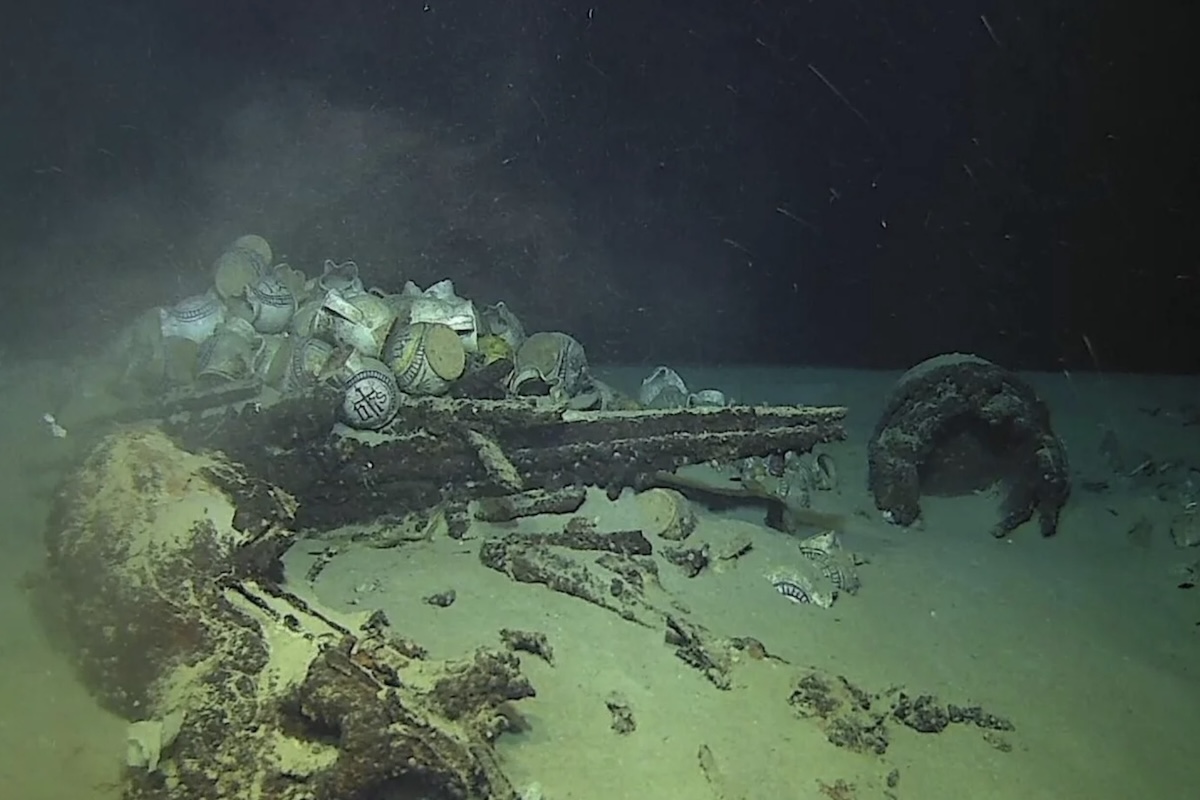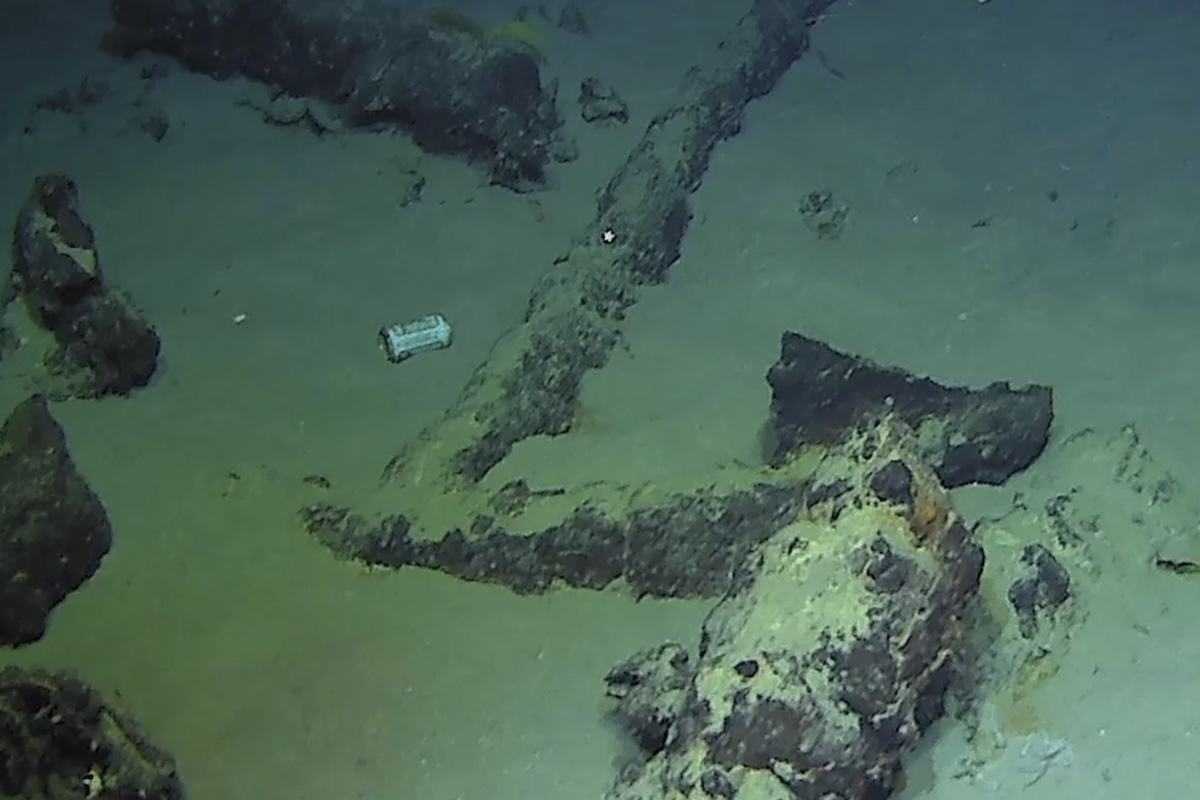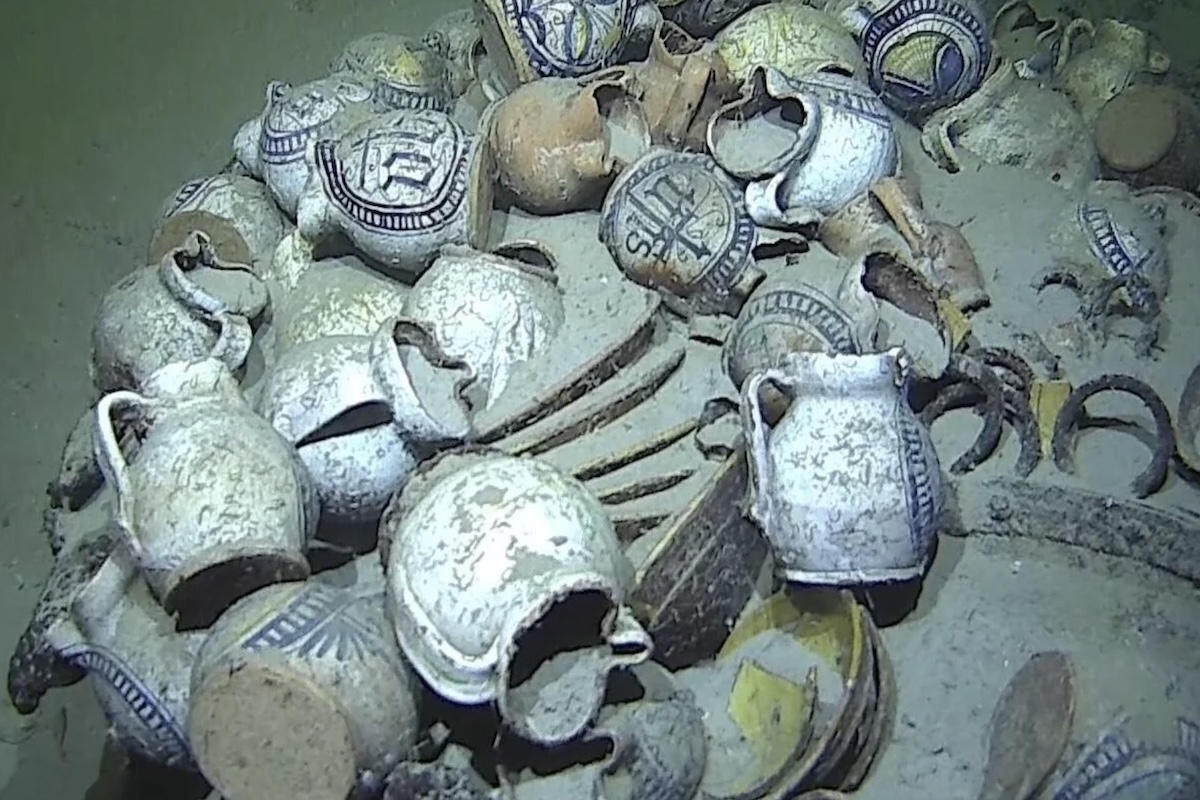You may not expect military technology to play a role in historical discoveries, but sometimes science and chance collide. In March, an underwater military drone on a routine mission to monitor the seabed off the coast of Saint-Tropez unexpectedly revealed a remarkable find. Deep below the waves, more than 8,400 feet underwater, the drone detected the remains of a sunken 16th-century merchant ship. This makes it the deepest shipwreck ever located in French territorial waters, offering a rare glimpse into a world long forgotten.

A Chance Discovery That Sparked Excitement
While patrolling the seafloor as part of an operation to study underwater resources, the drone picked up an unusual sonar reading. The team returned to the site with high-definition cameras and an underwater robot to investigate further. What they found was astonishing — the wreck of a centuries-old merchant ship, preserved in the dark silence of the Mediterranean seabed. Because of its incredible depth, the ship had avoided damage from looters or storms and remained almost entirely intact, a time capsule waiting to be explored.
Artifacts Tell The Story Of A Lost Journey
You’d be amazed by what still rests on the ocean floor. Archaeologists examining the wreck uncovered around 200 jugs with distinct pinched spouts. Some were decorated with plant patterns or geometric designs, while others bore the letters “IHS,” the first three letters of Jesus’ name in Greek. These items suggest the ship originated from the Liguria region in northern Italy. Along with the jugs, researchers also found piles of yellow plates, two cauldrons, six cannons, and a large anchor. Metal bars scattered across the site confirmed it had been a cargo vessel likely transporting goods from Italy to another Mediterranean port when it sank.
A Site Preserved By Depth And Silence
You might imagine a shipwreck this old would be unrecognizable, but the extreme depth played a surprising role. The darkness and pressure helped preserve the vessel’s contents, shielding it from decay and theft. Even so, traces of modern waste were found near the wreck, including an empty soda can and a discarded yogurt container. These served as stark reminders that while human history lies buried beneath the sea, today’s pollution still reaches even its most remote corners. Yet the wreck itself remained mostly untouched, allowing archaeologists to study it as though frozen in time.

Plans For Study And Preservation Underway
Now that the site has been identified and mapped, the next phase of the mission will begin. Over the next two years, specialists plan to create a detailed 3D digital model of the ship. Teams of experts, including archaeologists, ceramics analysts, and naval historians, will study the objects and the ship’s structure. Some items may be temporarily removed using remotely operated robots equipped with mechanical arms. After analysis, researchers aim to return any removed artifacts to the sea or preserve them for public display in a museum. This approach allows scientists to learn more about maritime life in the 1500s without disturbing the ship’s final resting place.
Comparisons To Other Notable Deep-Sea Discoveries
The discovery sets a new record for deep-sea finds in France. Previously, the deepest known wreck was a French military submarine that sank in 1968 during a training mission. That vessel was found just over 7,500 feet below the surface, which was already considered remarkable. This new find, lying even deeper, not only surpasses it in depth but also provides a richer cultural snapshot of European life during the Renaissance. The ship likely carried both everyday goods and items for trade, painting a vivid picture of maritime commerce and life during that era.

Unlocking Centuries Of Hidden History
You are witnessing a moment where ancient history meets cutting-edge technology. The combination of underwater drones and robotic arms has made it possible to reach places that were once inaccessible. This shipwreck isn’t just a random collection of old jugs and metal scraps. It is a portal into the past, an opportunity to learn about craftsmanship, trade, and even spiritual life in 16th-century Europe. The precision with which the wreck has been preserved provides scientists with an almost undisturbed canvas to study.
A Journey Just Beginning
Although the ship has been found, its story is still unfolding. The mission is far from over. As research continues, you’ll likely see new insights and discoveries emerge that deepen our understanding of the past. This remarkable accident at sea is now turning into one of the most promising archaeological ventures of the decade. With each passing month, experts will bring new details to the surface, literally and figuratively.
What do you hope researchers uncover from this centuries-old mystery beneath the sea? Let us know in the comments on Facebook.
Via: CBS News











